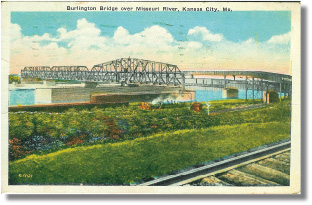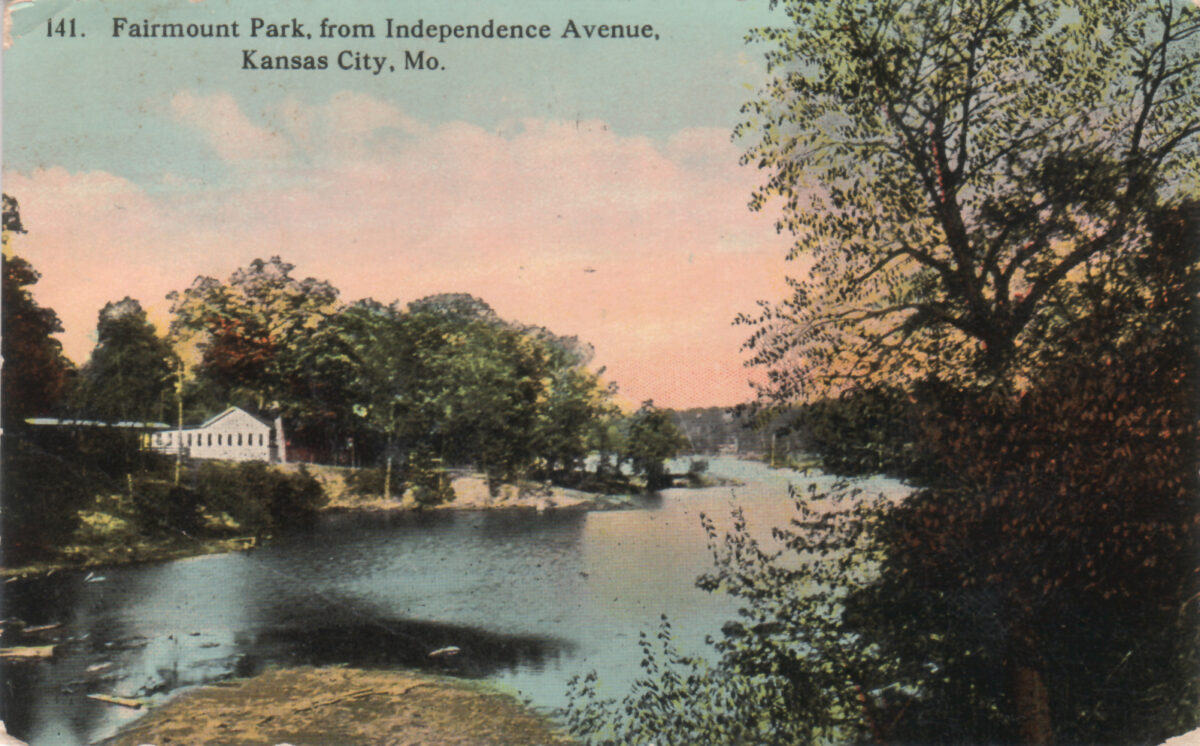
This Max Bernstein pre-linen style postcard, circa 1925, was sent to Miss May Clifford, R.F.D. of Sedalia, Mo., on Aug. 5, 1925.
It reads, “Greetings from the heart of America. Hope Dad and all keep well. Frequently we visit you in spirit. Devotedly, S. M. L & Co.”
The card shows the “new” Hannibal Bridge, noted as the “Burlington Bridge over the Missouri River” in this postcard.
The “new” Hannibal Bridge was constructed in 1917 to take the place of the original, which opened with much fanfare on July 3, 1869.
The original Hannibal Bridge was designed by world-renowned engineer Octave Chanute and at the time of its construction, the first railroad bridge across the Missouri River.
Its completion ultimately decided the fate of other river towns competing for the same bridge. Those being Leavenworth and Atchison, Kan., and St. Joseph, Mo.
At that time, those cities were growing at a faster rate than Kansas City in not only population but also in livestock trading receipts.
By the mid-1910s, however, the original span was fast becoming obsolete.
The growth of Kansas City and the advent of the automobile made it imperative that a new bridge across the Missouri be constructed.
At the time, construction of the ASB (Armour, Swift and Burlington) Bridge was stalled, leaving the partially constructed bridge piers standing in the middle of the river like massive stone monoliths.
The “new” span was constructed with two levels, the upper portion designed for automobile traffic, and the lower span designed for the railroad.
In 1956, when the “new” Broadway Bridge was opened, the upper deck of the Hannibal was mostly dismantled and auto traffic was re-routed over the new span.
The lower deck is still used extensively for railroad traffic across the Missouri.

















